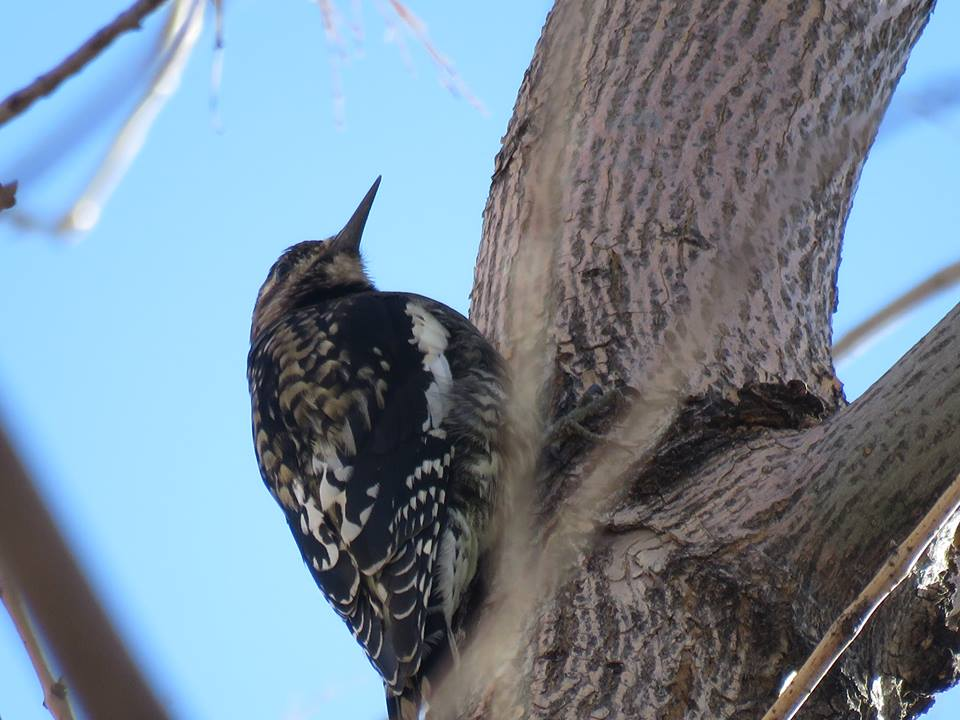Utah County Birders Newsletter
|
 |
Contents
2018
Birding Challenge and Other news
January Meeting
Upcoming Field Trips
Captain's Log
Bird of the Month
Field Trip Report
2018 Birding Challenge and Other News
The most exciting part of being a Utah County Birder is participating in the Birding Challenges. Please review the rules for the new 2018 challenge and species lists provided by Milt Moody on this page: http://www.utahbirds.org/ucb/BirderChallenge2018.html Good birding!
As a reminder, the American Birding Association has created a Code of Ethics to help us balance our desire to see as many birds as possible with our responsibility to promote their conservation. You can read it in full here: http://listing.aba.org/ethics/
In other news, Keeli Marvel will continue to serve as President (yay!), and she will also take on the role of Meeting Coordinator. Suzi Holt will now serve as the Utah County Birders Field Trip Coordinator.
Thursday, January 11th, 2018 Golden Corral, 7:00PM
Dinner at Golden Corral in Orem (225 W University Pkwy, Orem). Pay on your own
and join us as we introduce the 2018 birding challenge, our new field trip
coordinator, and enjoy a meal together. As we have done in the past, we will
have a back room reserved for our group. Hope to see you all there!
FIELD TRIPS:
Saturday, Jan. 20th, 2018: Salem Pond/Surrounding Area
Meet at 8 am in the Salem pond parking lot by the park. We will check out
the pond, then do a snipe hunt! We will be out until noon.
We are actively recruiting people to lead local half-day field
trips, any time, any place. If you would like to lead a field trip or if you
have any ideas for this year’s field trips, please contact Suzi Holt at -
suzerqholt@gmail.com
Utah County Birders
Captain’s Log: January
2018
by Keeli Marvel
Hope you guys aren’t tired of me yet, because I’m sticking around for another
year! Hope everyone had a lovely Christmas and a Happy New Years! We’re bringing
the challenge back this year, so Jan 1 it’ll be time to get back out there and
start seeing birds! To get you in the mood, I bring you part 2 of my South Texas
birding trip:
After a fruitful Big Day birding all over South TX Sam and I had planned a much
more laid back Pontoon boat trip along the Rio Grande River. Unfortunately a fog
bank had crept in overnight, so the first half of the trip was socked in.
Despite the fog, and eventually, after it lifted enough we were able to get a
couple more lifers. As we slowly motored down the Rio Grande we saw Altamira
Orioles (which were so bright they stood out, despite the fog), a Gray Hawk,
Green, Ringed, and Belted Kingfishers (all three possible in this area), and
trees FULL of Black Vultures. At one point a pair of Border Patrol boats cruised
past us in the fog. On our return trip to the dock we got a surprising look at a
Pyrrhuloxia, an uncommon, but not totally unusual species in the area.

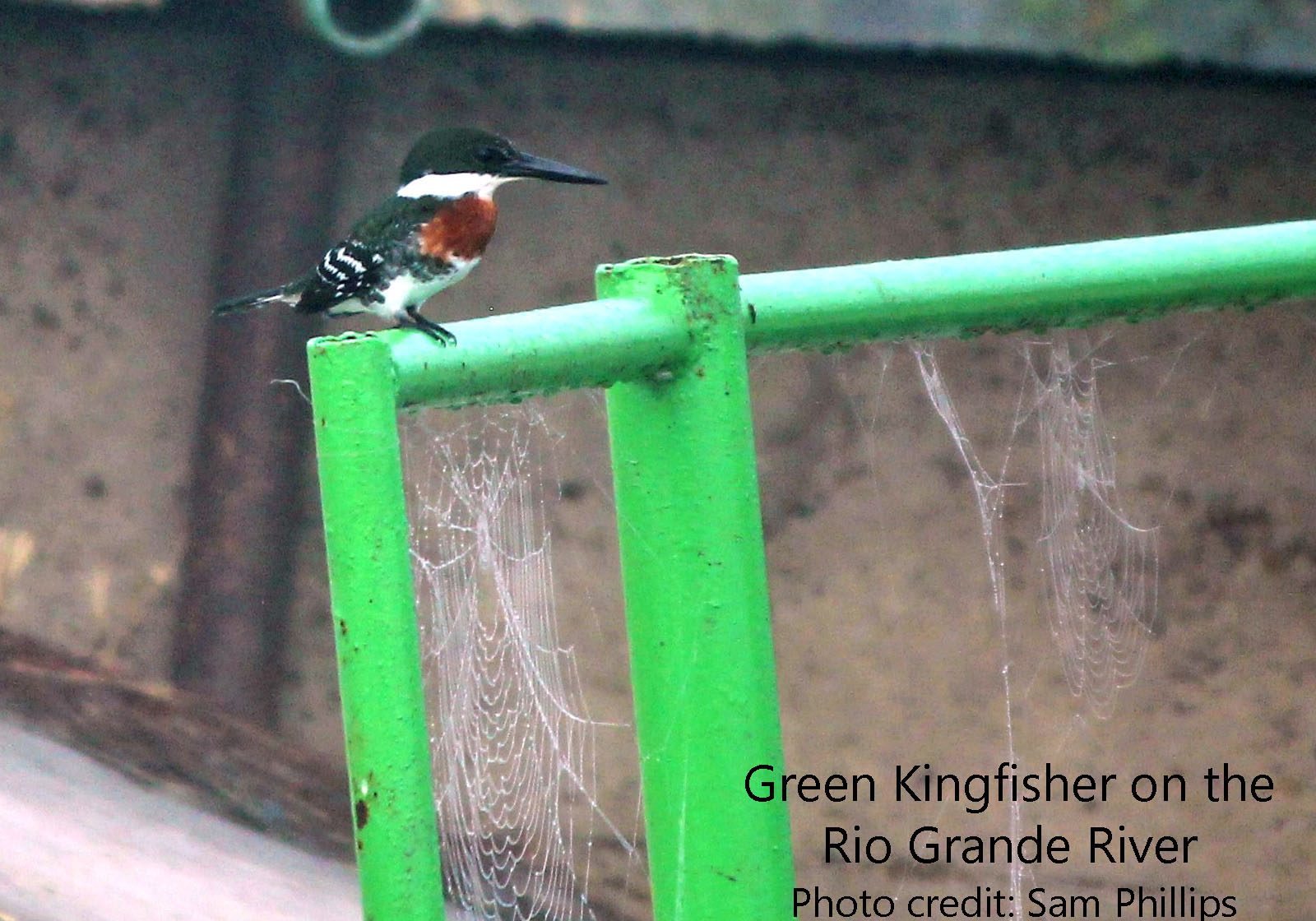
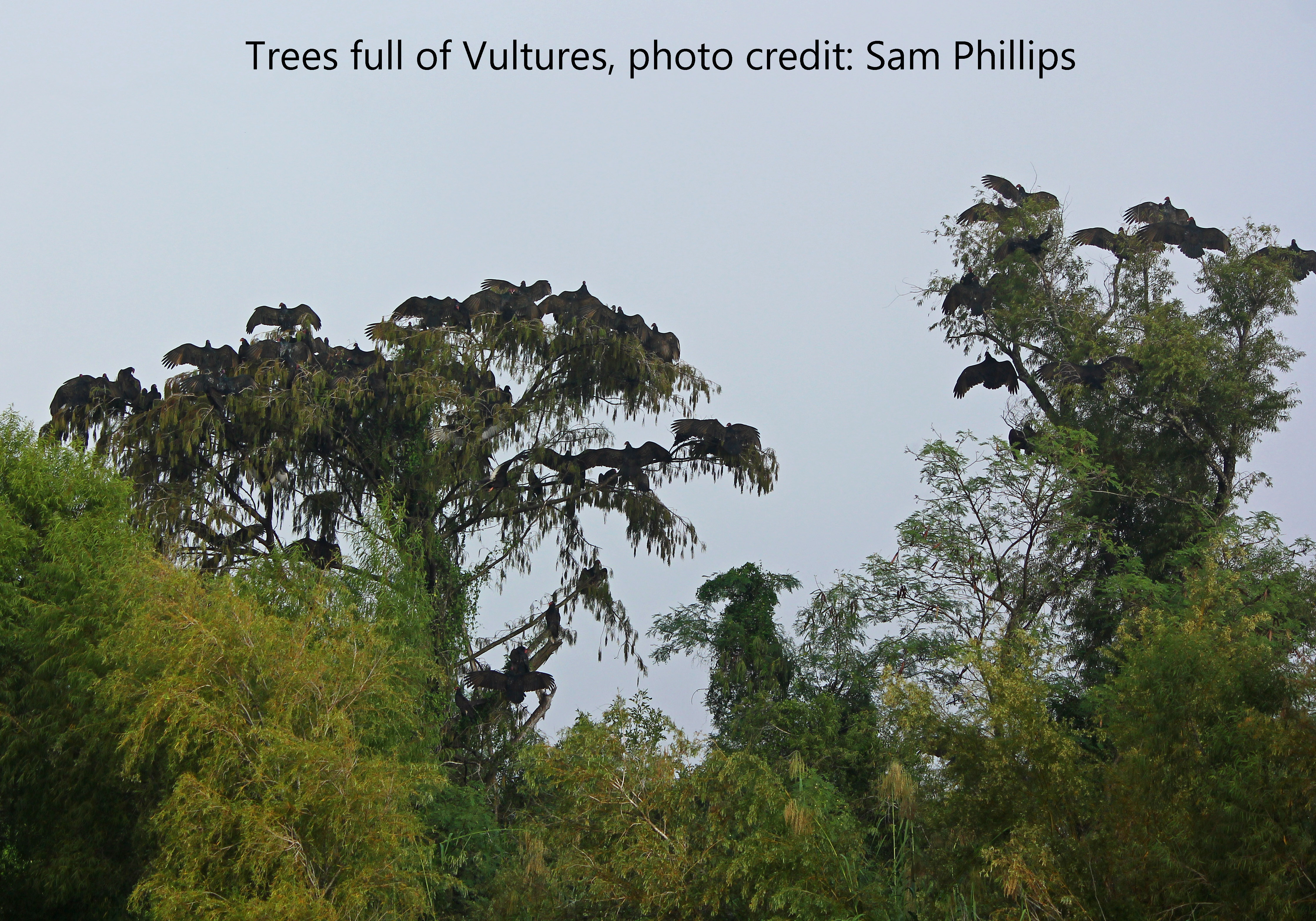
Following our foggy boat ride the tour bus navigated its way around some very
tight turns to take us to Anzalduas Park, a few miles down the river. There we
got great looks at another Northern Beardless-Tyrannulet (which, if you’ll
remember from my last article, is the smallest flycatcher in North America). We
got to watch Green Jays hard at work stashing acorns much like Acorn
Woodpeckers. We also saw several Great Kiskadees, a stunning male Vermillion
Flycatcher, and a couple of different species of Thrashers. We tried for a
Sprague’s Pipit, as the grassy fields along the dikes are often a good place to
find them. Unfortunately, we struck out on those. Following our visit to
Anzalduas Park, our guide had promised us a surprise. Unfortunately, the
surprise was a Burrowing Owl which was a no show. We also got asked politely to
leave the area where we stopped to look for the owl by Border Patrol as they
said the stretch of land along the border there was a dangerous no-man’s land
where drug cartels tried to operate and violence had occasionally erupted when
cartel members would sometimes take shots at anyone wandering around
suspiciously on the US side of the border. So that was exciting- a little touch
of danger in our otherwise benign birding trip. I would say that the majority of
places we visited were perfectly safe, especially if you stayed within park
boundaries and birded with a partner or a group.
Following our return to Harlingen, we spent the afternoon at Hugh Ramsey Park
picking up a few more birds that we had missed up to that point. They had
several blinds and feeding stations set up and we got great looks at
White-tipped Doves, which came in to feed at a feeding blind with Green Jays,
Plain Chachalacas, and a cute little Javelina. We also got our lifer Couch’s
Kingbird which can only be distinguished from Tropical Kingbirds by their call.
We’d managed to miss all of them up to that point.
We finished off that day with a trip back to Brownsville, not to the dump, but
to Oliveira Park at sunset to watch the parrots come in. They were hard to miss,
a flock of noisy parrots that flew in right about sunset and perched on the
trees and powerlines at one end of the park. There were a few birders gathered
there to witness the spectacle, and with group effort, we managed to pick out
the five possible species – Red-crowned, Yellow-headed, Lilac-crowned, Red-lored,
and White fronted Parrots. It was fun to watch their antics as they seemed quite
playful and would pester each other and goof around, sometimes ending up hanging
upside-down on the powerlines. That ended our second day of birding in South
Texas.
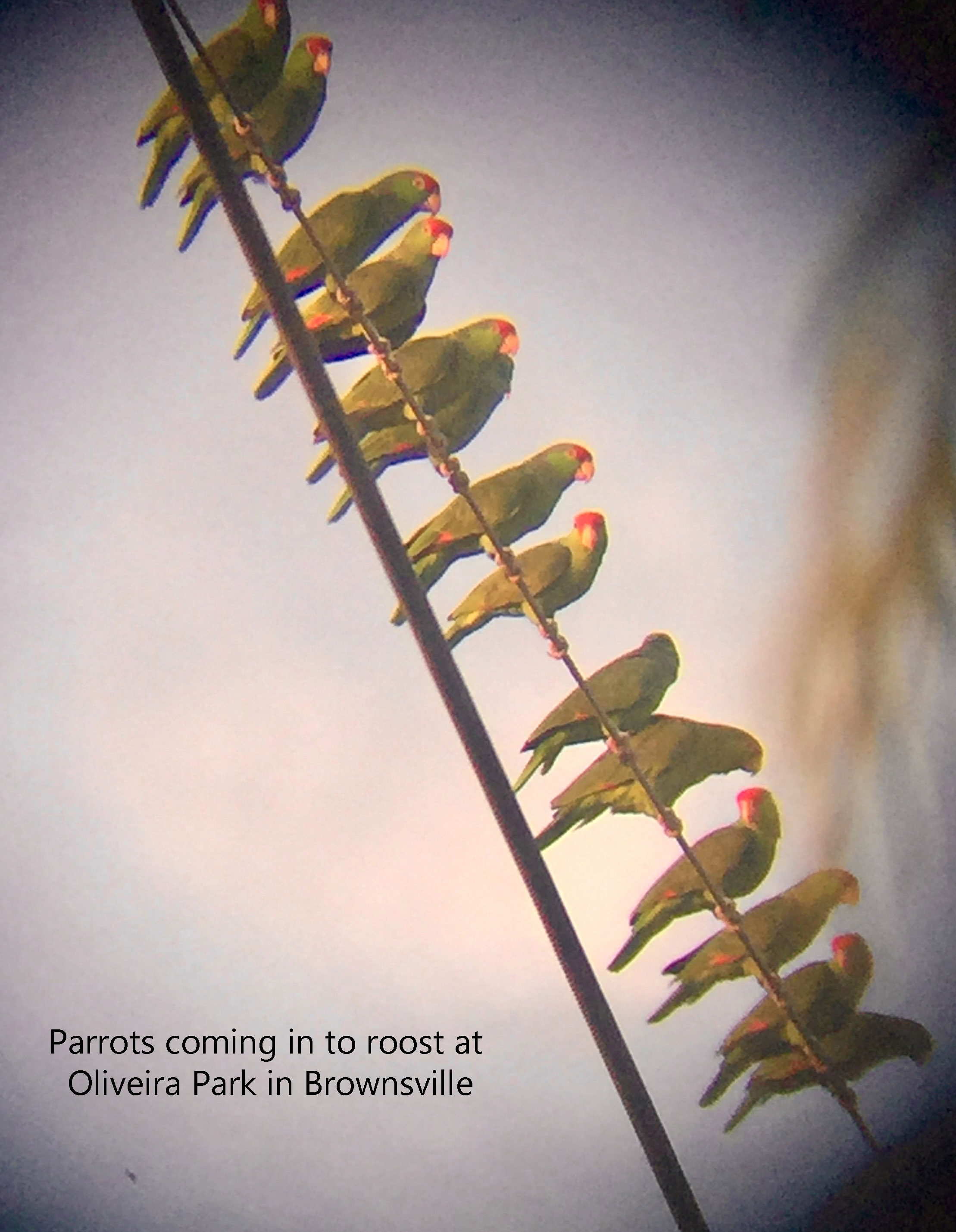
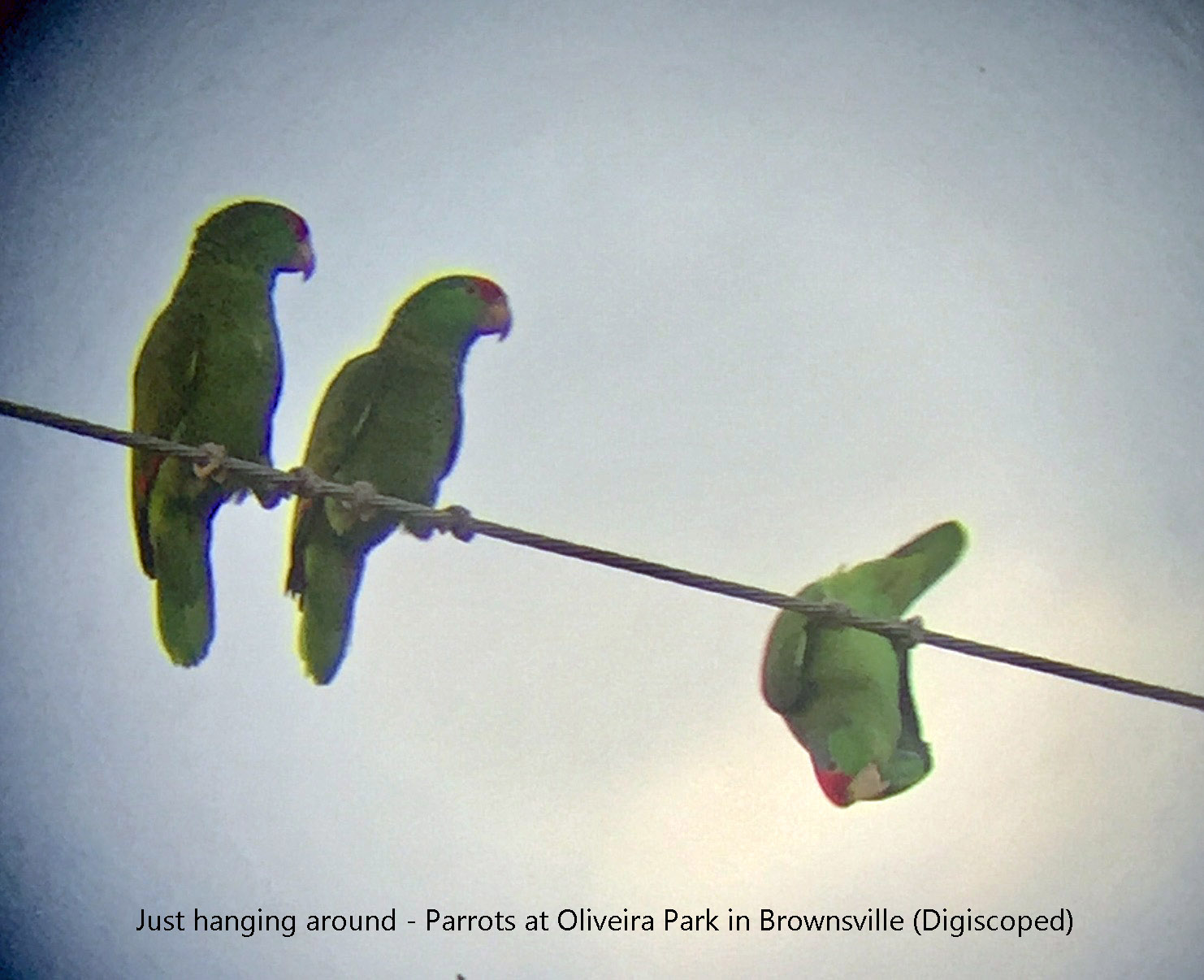
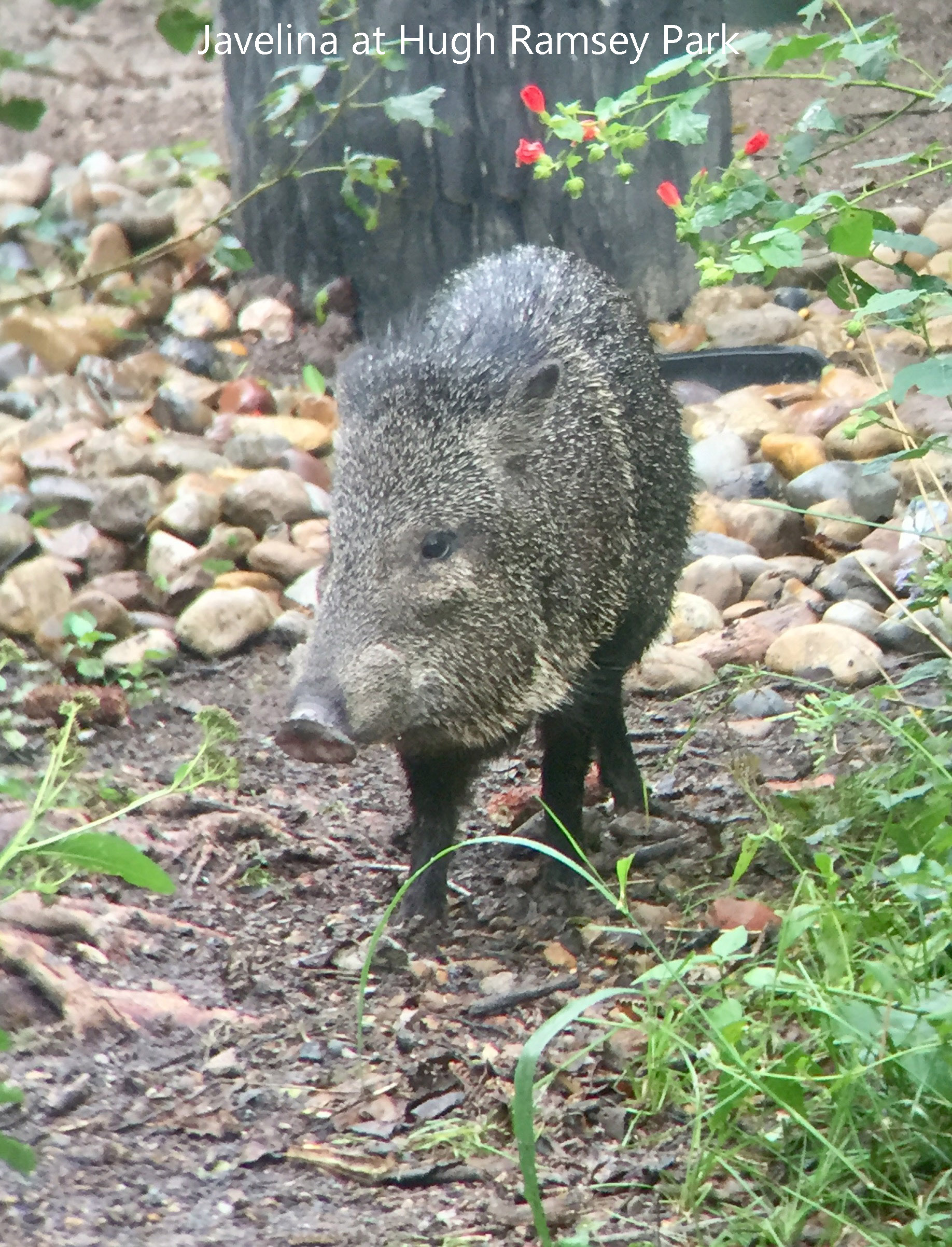
For a report of our third and final birding day in South Texas, tune in next
month. And, as always,
Happy Birding!
|
|
|
Photo by Suzi Holt |
Yellow-bellied Sapsucker
Sphyrapicus varius
By Machelle Johnson
It’s probably best not to lead off a sentence to a non-birder saying, “I saw a
Yellow-bellied Sapsucker today!” If your friend is like my husband then you will
get a full 5 minutes of mocking such as “Really, did you also see a
Dimple-cheeked Fuzzy Tail? How about a Lizard-eyed Flat Head? A Barrel-chested
Big Nose?” Etc., etc. He thinks he’s so funny…But really, Yellow-bellied
Sapsucker? Well, yes. That describes this bird exactly. They are fairly small
woodpeckers with stout, straight bills. Mostly black and white with boldly
patterned faces. Both sexes have red foreheads, and males also have red throats.
Look for a long white stripe along the folded wing, although it is not always
conspicuous. Learn not to depend upon it. Bold black-and-white stripes curve
from the face toward a black chest shield and white or yellowish underparts. As
for the sapsucker description, they feed at sapwells—neat rows of shallow holes
they drill in tree bark. They lap up the sugary sap along with any insects that
may get caught there.
Typically found in the east, it is very rare to see one in the west. For the
past week there has been one hanging around in the Springville Evergreen
Cemetery. I saw one a few years ago at Lytle Ranch in Washington County. I was a
bit surprised at the overall mottled, dingy look of the bird, I was expecting
crisper definitions per my field guide but later I read Pete Dunne’s
description: “Yellow-bellied Sapsucker’s upperparts are less contrasting than
pure black and white. The pattern replicates the 3-D dappling of sunlight on
branches. Note: Most field guides show the birds with more contrast and crisper
definition than is evident in the field. Shabbily patterned underparts are
tarnished yellow with shadowy barring. All in all, and unlike most woodpeckers,
the basic plumage of adults is muted – a backdrop that makes the distinctive
red-black-and-white pattern of the face and the very white racing stripe
defining the edge of the folded wing stand out.”
References: Pete Dunne’s Essential Field Guide Companion,
www.allaboutbirds.com
If you would like to
write an article for the Bird of the Month, please contact Machelle -
machelle13johnson@yahoo.com
Click here for past 'Birds of the Month'.
Provo Christmas Bird Count Report, Dec. 16,
2017, by Bryan Shirley
Every year the Audubon Christmas Bird Count is a lot of fun and this year
was no different. The count in Provo was held on Dec 16, 2017. This was the
118th year of the count total and the 46th year in Provo. We had 37 participants
covering our count circle. Going into the count day the weather predictions were
not great, but the weather held and although it was a bit cold there was no
storm and it could have been a lot worse. Overall most of us felt like the
birding was slow and numbers felt low - especially for passerines. We ended up
with a better than average species count though and totaled 97 species. We added
2 new species that we have never recorded before - Blue Jay and White-winged
Dove. Other highlights included Tundra Swan, Eurasian Wigeon, Blue-Gray
Gnatcatcher, Bewick's Wren, and Harris' Sparrow. There were a few notable
misses, the biggest was Townsend's Solitaire. We have only missed it 2 other
years.
Thanks to everybody that participated & thanks again to Milt for hosting the
compilation and pot luck party!
New Year's Day Birding, Jan. 1, 2018, by Suzi Holt
We had 13 UCB show up for our New Year's kickoff
field trip!!! We started at East Bay and struck out with the Eurasian Wigeon,
but we did get a Cackling Goose and Black-crowned Night Heron! From there we
checked out Flowserve ponds getting a Great Egret, and our resident American
White Pelican at East Bay. Headed to Cliff's for the White-winged dove, strike
2. Then to KC Childs for his Juniper Titmouse...strike 3. We picked up
Red-breasted nuthatch and Black-capped Chickadee there. At Clegg's pond we got a
Wood Duck. Decided to try again at East Bay for the wigeon :-(. The field trip
officially ended there but a few of us decided to try Salem for the Greater
White-fronted Goose, that was a success! We ended at the Payson Cemetery with a
Red-naped Sapsucker! A good day!
48 species
Greater White-fronted Goose
Cackling Goose
Canada Goose
Wood Duck
Northern Shoveler
Gadwall
American Wigeon
Mallard
Green-winged Teal
California Quail
Pied-billed Grebe
American White Pelican
Great Blue Heron
Great Egret
Black-crowned Night-Heron
White-faced Ibis
Northern Harrier
Sharp-shinned Hawk
Bald Eagle
Red-tailed Hawk
American Coot
Killdeer
Ring-billed Gull
California Gull
Rock Pigeon
Eurasian Collared-Dove
Mourning Dove
Belted Kingfisher
Red-naped Sapsucker
Downy Woodpecker
Northern Flicker
American Kestrel
Black-billed Magpie
Common Raven
Black-capped Chickadee
Red-breasted Nuthatch
Ruby-crowned Kinglet
American Robin
European Starling
Yellow-rumped Warbler
Dark-eyed Junco
Song Sparrow
Spotted Towhee
Brewer's Blackbird
Great-tailed Grackle
House Finch
Lesser Goldfinch
House Sparrow
Printable Version of this UCB Newsletter
